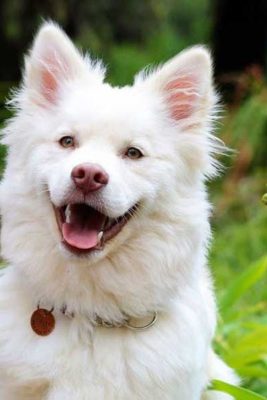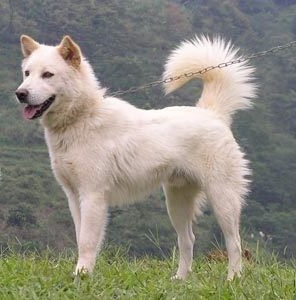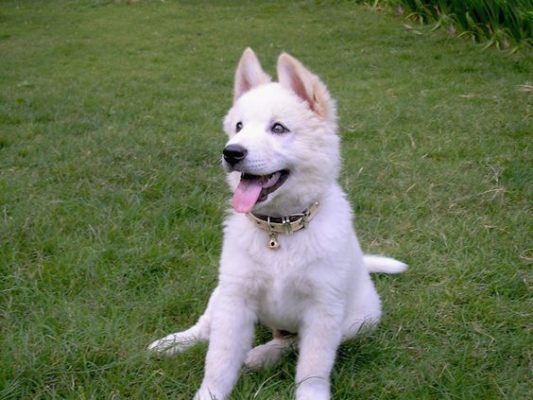Kintamani
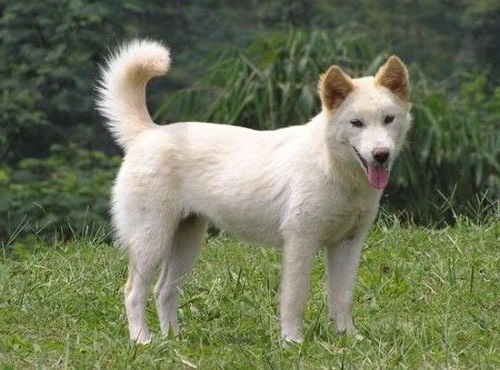
Vigilant, intelligent, active, and agile, Kintamani is easy to train. The Balinese Dog appreciates the watchdog’s guarding skills and confident demeanor. Their well-developed intelligence makes them excellent companions. Balinese Dogs are very curious and overly anxious. Keeping them locked up or leashed is not a good idea; to say the least; it affects the dog’s psychological state and decreases its activity level.
Table of Contents
Breed Information
| Another Name | Balinese Kintamani, Balinese Mountain Dog, Balinese Dog, Bali-Berghund, Anjing Kintamani-Bali, Kintamani-Bali Dog, Chien de Bali/Kintamani, Kintamani-Bali-Hund, Perro Kintamani-Bali |
| Origin | Indonesia |
| Height | Males 45-55 cm Females 40-50 cm |
| Weight | 13-18 kg |
| Fur | Medium |
| Color | White, paler (beige), red, tiger, black |
| Lifespan | 13-14 years |
| FCI Classification | Spitz and primitive types |
| Group | Watchdogs |
| Price | From $250 |
Breed Photos
Origin History
The Kintamani, or Balinese Dog, is the most popular pet breed in Indonesia, yet it is hardly known outside the country. The breed was named after the city of Kintamani, on the island of Bali. How they got there more than three thousand years ago is not known for sure. DNA tests have established links with dozens of Asian and European breeds, but the dominant genes are Australian dingoes, Chinese chow-chow, and Bali street dogs.
In the fight against rabies, in 1926, it was decided to close the borders to animals from other countries; this meant that foreign dogs were barred from Bali for many years, which allowed them to remain authentic and stopped any genetic mutations. The Kintamani is the first Indonesian breed to gain international recognition. Only in 2019, Balinese Dogs were allowed access to international competitions and shows.
Appearance
Kintamani is a medium-sized, well-balanced dog with a rectangular body. The tail is sickle-shaped, the ears are upright, the head is wedge-shaped, proportional, the eyes are brown. The neck is well planted on the shoulders, wide loin, and well-developed chest. The coat is long and dense; the primary color is white, black, golden, and red.
Character
Vigilant, intelligent, active, and agile, Kintamani is easy to train. The Balinese Dog appreciates the watchdog’s guarding skills and confident demeanor. Their well-developed intelligence makes them excellent companions.
Balinese Dogs are very curious and overly anxious. Keeping them locked up or leashed is not a good idea; to say the least; it affects the dog’s psychological state and decreases its activity level. Very fond of freedom, self-sufficient, and prone to roaming.
Big water lovers, ready to splash around in it 24 hours a day. They love heights and climbing on the roofs of Balinese Dogs. Bark when they see something unusual in their mind or hear any strange and unfamiliar sound.
Care
The Kintamani does not require care; it is perfectly capable of taking care of itself. The format of the relationship between humans and Kintamani comes down to guardianship. Communication in the form of guardianship is supported by most owners of this breed in Indonesia. All neighbors will feed and help in any way they can, as they will be sure that this is their pet. One dog can lead several families by the nose at the same time! They will never be left without attention; there will always be someone ready to feed and caress them. Rabies vaccination is also mandatory.
Training
It is difficult to train; the process can take a very long time. The independent nature of the Kintamani does not give much affection to humans. One should not expect much loyalty from such a dog. Attentiveness and inquisitive mind help Kintamani grasp any command lightning-fast, but this does not mean that it will immediately execute them. Can walk alone quietly and not come back for a couple of days. Do not lock your dog in the apartment for a long time; it can lead to uncontrollable aggression and mental problems.
Common Diseases
There is no reliable information about Kintamani genetic diseases. Wildlife has tried its best to select this breed and has left only the most adapted.
Even with a vagrant existence and a disgusting diet, Kintamani can live a long and, in their way, happy canine life.
The primary and serious disease that can threaten the entire Kintamani population is rabies.
Nutrition
Kintamani can easily eat both garbage from the garbage dump and leftover ceremonial food. They are unpretentious about food. The ration and number of meals per day may vary depending on where the animal lives.
 Hamiltonstövare
Hamiltonstövare Rottweiler
Rottweiler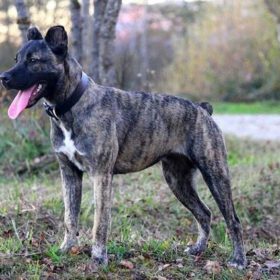 Saint Miguel Cattle Dog
Saint Miguel Cattle Dog English Cocker Spaniel
English Cocker Spaniel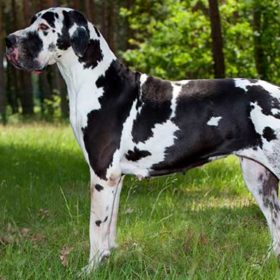 Great Dane
Great Dane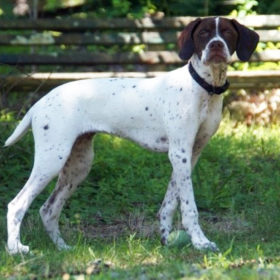 Braque Francais (Pyrenees)
Braque Francais (Pyrenees)